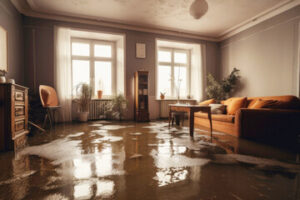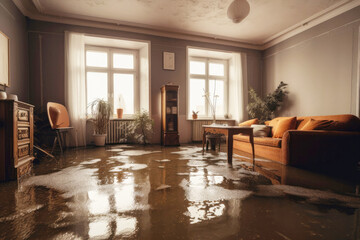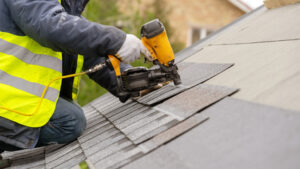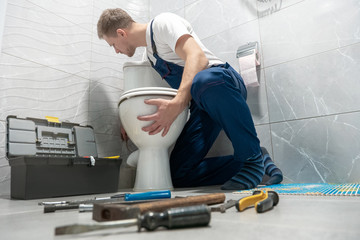Water Restoration Los Angeles is an extensive process involving more than cleaning up the damage. It also involves taking preventative measures to minimize future incidents and reduce the cost of repair.
A professional team will first locate and stop the water source, then begin the clean-up work. They will use wet/dry vacs, pumps, air movers, and dehumidifiers to remove the water and start drying.
Water damage restoration is a complex process, and it requires specialized equipment. Identifying the source of the water and how it got there is an important step in this process.
This can help determine the type of water damage repair needed, such as water mitigation or restoration services. The sooner that this process is done, the less damage will be caused.
In addition to identifying the source of the water, it’s also important to find out what type of water damage has occurred. This will help determine what steps are necessary to restore the home back to its previous state. For example, if it’s just a small leak, it may be sufficient to perform water mitigation services rather than restoration services.
Leaks can be located by looking for wet spots on the floor or walls, or listening for strange sounds. However, it’s best to call a professional for assistance. They will have the right equipment and knowledge to quickly locate a leak. They can then come up with a plan to get the leak fixed and the area dried as soon as possible.
Standing water in a home poses more than just a health risk; it can also pose a safety hazard, as it can breed mold and bacteria, which can lead to serious illness. In addition, if the structure was occupied at some point, it can also be an electrocution risk, as appliances and electrical outlets are still live and energized.
There are many different ways to protect drinking water sources, including conservation practices, regulations, and outreach programs. The EPA’s Water on Tap website offers more information on this topic, as well as helpful resources for citizens and water systems.
Assessing the Damage
Once the water has receded, a restoration company must assess the damage caused by the water. They will check the building materials to see how much water was absorbed and determine whether they are salvageable or need to be replaced. They will also check the contents of the home to see how much water has affected personal items and what can be repaired or restored. They will take a list and photographs of these items to submit to the insurance provider as proof that the damage has occurred.
In some cases, a restoration company will need to remove building materials like drywall down to the studs or carpeting down to the subfloor. This is done to speed up the drying process and to ensure that no bacteria, mold or mildew are left behind. Then the restoration company will dry the area using fans, air scrubbers and other equipment to eliminate any moisture in the air.
They will also use a moisture meter to measure the amount of moisture in the building materials. This will help them figure out the best way to dry the area and ensure that no pockets of moisture remain. They will also inspect furniture, appliances, and other personal belongings to see how much the water has impacted them and what can be repaired or restored.
This is a detailed inspection that will provide a clear picture of the water damage. Then they will be able to create a plan to restore the space. They will repair damaged furniture and fixtures, clean and sanitize the area, and dry out the affected areas. This will prevent the development of bacteria, mold and mildew that can cause health issues for the family. It will also allow the family to return to their normal routines as quickly as possible.
Preparing the Restoration Work
Once the water has been extracted and the building is fully dry, it’s time to start the restoration process. This can involve cleaning, sanitizing, and deodorization in addition to repairs. If necessary, the team can apply tarps and boarding to protect items from further damage and prevent mold growth. They can also recommend temporary solutions like air conditioning, floor fans and dehumidifiers to keep the building in good condition.
It’s important to find a qualified and experienced professional for the water restoration process. Look for an IICRC-certified specialist who follows industry standards to ensure a safe and effective restoration. This will help ensure that the work is completed correctly and that any permanent damage is repaired.
The restoration team will inspect the area to see what materials can be saved and which ones need to be replaced. They will also assess the level of contamination and class of the water damage. They will use a combination of methods to determine the class of the water damage, including moisture swabs, hygrometers and wet porosity testing.
If the water damage is severe, the restoration company may have to remove some elements of the property. This could include removing drywall, carpeting or other materials that have been permanently damaged or saturated by water. The team will also remove any personal belongings that are not salvageable.
Once the work has been finished, the home or business can be returned to its normal state. This step may involve repair and reconstruction depending on the severity of the damage. It is best to have a single, reputable restoration and construction company handle both the mitigation and the restoration. This can save time and money and make the whole process run more smoothly.
Cleaning the Area
The cleaning and sanitization of the affected area is critical to any water restoration project. Any items that cannot be cleaned or disinfected should be removed from the home to prevent mold growth and other secondary damage. This includes upholstered furniture, carpeting, insulation, and wallboards. Professionals use foam, abrasive, or immersion cleaning techniques to thoroughly clean and sanitize the affected areas. This is especially important if the water damage was caused by black water, which is unclean and dangerous to touch. The water removal specialists will also monitor the moisture levels of the walls and floors to ensure that they are dry before any repairs begin. This can be done using a moisture meter or an infrared thermal camera. Drying equipment will be placed in the home during this phase to speed up the drying process.
Drying the Area
Once the water is removed, it’s time for the drying and dehumidification process to begin. This step is crucial to preventing long-term damage, as mold and mildew can grow in as little as 24 hours under damp conditions. This process involves using air movers and dehumidifiers to replace the moisture in the air and dry out any materials that have been affected by the water. It is also important to check any hidden areas, such as attics, for signs of water damage.
The restoration company will use different methods to dry out the area, depending on the amount of water and what type of materials are involved. For example, if the water has caused damage to insulation materials, they may need to remove and replace them. In addition, the company will remove any materials that cannot be saved and then clean and sanitize the area.
This process can take several days, depending on the conditions and what materials are affected. If the humidity is high, it can take longer to dry the area. In addition, the water restoration company will inspect the area on a regular basis to make sure that no mold has developed.
If any regulated hazardous materials or chemicals are involved in the water restoration process, the company will have to follow additional procedures and government regulations. These chemicals include petroleum products, gasoline, flammable or combustible materials, pesticides, solvents, caustic chemicals, and radiological residues. The restoration company will also have to follow special procedures if there are asbestos, lead, or mercury materials in the area. In this case, a specialized contractor may need to be brought in to assist with the inspection and remediation.






 Professional tree service technicians are hired for a variety of reasons. They may be called upon to treat trees near power lines or houses. They may also be hired for aesthetic purposes, such as clearing trees for sidewalks and trails. They
Professional tree service technicians are hired for a variety of reasons. They may be called upon to treat trees near power lines or houses. They may also be hired for aesthetic purposes, such as clearing trees for sidewalks and trails. They